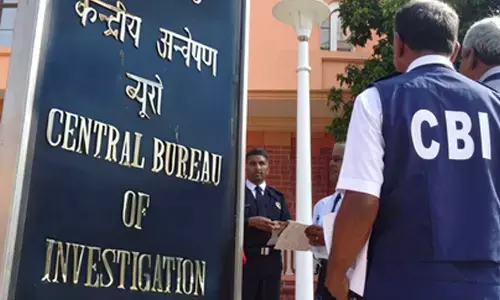New dimensions of disaster management

New Dimensions of Disaster Management, Recent Phailin Super Cyclone. Experts have identified around 60 categories of disasters spread into areas like space, ocean, land, technology etc for the World Congress on Disaster Management in Hyderabad to be organized next year.
Experts have identified around 60 categories of disasters spread into areas like space, ocean, land, technology etc for the World Congress on Disaster Management in Hyderabad to be organized next year.
The recent Phailin super cyclone that created havoc on the East Coast of India was tackled with ease by government agencies. There were fewer casualties, around 20. We must congratulate our Disaster Management agencies like the NDMA, IMD and the State Revenue Department on their alacrity. This has attracted the attention of countries like the UK and the US where hurricane and cyclone-related deaths will be high. The PM met the functionaries of NDMA on 28th October and assured that some amount in each department of the government would be earmarked for disaster management. This augurs well for the country.
We had an opportunity to interact with some DGs of IMD in our official work in Delhi and learned that the job of a scientist in the division is very challenging given the resources. However, our experts excelled in the art of prediction by changing the methodology, using data of 30 to 100 years of observations and with the support of satellite communication. Andhra University being on the East Coast is one of the earliest to have started an independent Department of Meteorology and Oceanography contributing to the knowledge base on forecasting. Now our scientists are able to predict exactly when and where the cyclones strike our coast. But, the post-cyclonic relief, rehabilitation and management seem to be under criticism.
Cyclones and super cyclones are not new to the people of East Coast as they have been experiencing the harsh conditions from times immemorial and acclimatized themselves to such disasters.It is noted in some of the research studies (Odisha) that the fishermen of East Coast are are more knowledgeable than the Europeans in the science of oceanography. The earlier fishermen had developed indigenous techniques and their remnants are preserved in the Naval Museums with little attention paid by our historians. The present torrential rains and heavy loss of life and property all over the State call for a rethink on our cyclone preparedness and the approach to mitigate disasters.
The present disaster management method to lessen loss of life and property seem to be short of latest developments as far as our situation and conditions are concerned. It seems the NDMA and other agencies are geared to diminish the impact of cyclones and not prepared enough to tackle the issues that arise after floods, landslides, etc. It is reported that the casualties during the post-cyclone scenario in the State have gone up to 50 and property worth Rs 3500crores is lost. The infrastructure, particularly road and rail links got devastated and passengers stranded at different places had suffered a lot. It is a regular feature on the East Coast that needs to be addressed completely to protect not only precious lives but the livelihoods.
Disaster is defined as the occurrence that causes widespread destruction and distress. It is divided into manmade and natural. It is now difficult to demarcate between the two as most of our wicked activities in pursuit of wealth and luxurious living are resulting in erosion of natural resources leading to sudden outburst due to imperious environmental load. Experts have identified around 60 categories of disasters spread into areas like space, ocean, land, technology etc for the World Congress on Disaster Management in Hyderabad to be organized next year. The Government of Andhra Pradesh in consultation with the NDMA has done an exercise on mitigation plan. Yet, the present floods and storms have resulted in loss of crops in 29 lakh acres and 2176 tanks, 9000 kms of roads damaged as per preliminary estimates. This brings us to the basic facts relating to the environmental capacity of the East coast and its subsequent wreckage.
Nature has developed its own protective system and people living on the coast have also equipped themselves with traditions and customs that relate to their environment. Fishermen living on the coast knew the importance of mangroves, a salt tolerant plant that remained as a protective stratagem. The colonialists brought cashew and planted on the coast to arrest soil erosion along with other plantations to reduce the intensity of cyclones. Our modern policy makers have found that they are outdated and useless techniques that seize precious wealth and therefore advanced western models of development. They prescribe methods perhaps on the basis of their study tour of Amsterdam or Rotterdam or some dam thing in Europe to replicate in India .The industrial, refinery, recycling, trade and other activities are prescribed on the coast sitting in a land locked place like Delhi without perceiving the consequences in a tropical country.
The damage done to mangroves as per the latest Forest Survey Report is the greatest on the West Coast, particularly in Gujarat, and on the East Coast, Andhra Pradesh. It is reported that we had 495 kms of mangroves in 1987 and they were reduced to 354 kms by 2005 and may be less now. The consequenceof this is experienced with a surge in intensity of cyclones and floods. We could discern this from the data that show reduction in casualties while the value of physical damage increased from Rs 765 croresin 2003-4 to Rs 10,000 crores in 2006-7.
It seems, the mandate of NDMA or the wings of disaster mitigation units of state governments have limited jurisdiction in the formulation of development policies.If it is not possible to provide a proactive role to NDMA and other mitigation machinery, why not they be instructed to conduct and or coordinate research for alternative sources of reclamation of resources? For instance, Rice research centres are working on varieties that can survive in flood water; DRDO must be working on technologies that survive in floods, identifying vulnerable areas and sincerely rehabilitating the inhabitants etc and propagate them. NDMA is not averse to original ideas. I have a curious experience with the organization. I sent a proposal through National Human Rights Commission ( as SR) when heatwaves in Andhra Pradesh killed hundreds in May-June to consider it as a natural disaster to enable governments to give calamity relief to victims. It was forwarded to the Prime Minister and the GoMs eemed to have considered its inclusion under national calamity and the same was communicated to me recently.














